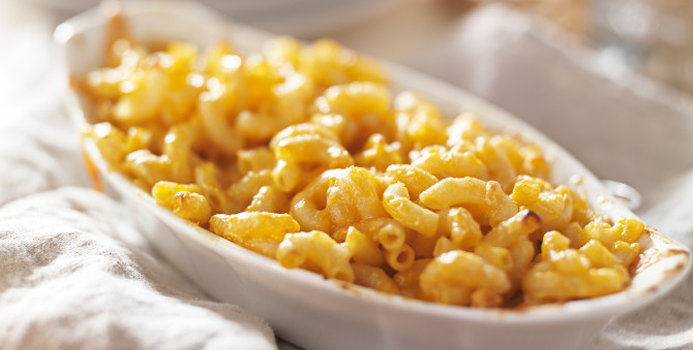If you have young kids, chances are that they have pestered you at some point for some macaroni and cheese. If you are an adult, chances are that you have helped yourself to some macaroni and cheese if you wanted a quick meal and were pressed for time. Macaroni and cheese is one of the simplest examples and varieties of a common casserole made of cheese and macaroni pasta. Packaged food mixes are often used to prepare this dish, though you can just as easily go into an upscale restaurant and find mac and cheese on the menu.
High in Calories
The caloric content of macaroni and cheese is exorbitantly high with only one-quarter of a cup already totaling 290 calories. Since macaroni and cheese is often eaten as a side dish along with something else, your calories only stand to increase further beyond the 290 calories in a regular meal situation. Due to this high caloric content, you would have to engage in semi-heavy exercise after the fact just to burn off the 290 calories taken in with a quarter cup helping of this food. For example, you could do 59 minutes of fast ballroom dancing, mambo dancing for about 89 minutes, or even domestic sewing for 177 minutes. The majority of calories in macaroni and cheese come from carbohydrates, with protein and fat contributing the second- and third-highest calories, respectively.
High in Sodium
Sodium is found in massive abundance in macaroni and cheese, a fact that might concern you because of the harmful effects that sodium is tied to. From one helping of macaroni and cheese, which works out to around 418 grams, you are exposing yourself to a distressingly high amount of 1760 milligrams of sodium. While macaroni and cheese is comparatively low in other potentially harmful elements like sugar, that does not make up for the extremely high sodium content. Eaten to excess, sodium has been tied to many hazardous health conditions in the human body, such as high blood pressure, stroke, cardiovascular disease, cardiac enlargement, edema, osteoporosis, heartburn, death in the worst cases, and gastric as well as duodenal ulcers.
Nutritional Controversy
Its relatively low price at the supermarket, in the case of Kraft Macaroni and Cheese, has caused the company to be accused of targeting low-income families with unhealthy food choices. Further accusations claim that the company preys on the restrictive budgets of said families as well. The dish is not one you should eat if you want to lose weight, but currently, many makers of the dish have introduced low calorie options that let you cancel out certain ingredients that add to macaroni and cheese's high fat and calorie levels. An example is the use of skim milk, non-fat yogurt, and the substitution of olive oil in the making of macaroni and cheese.



